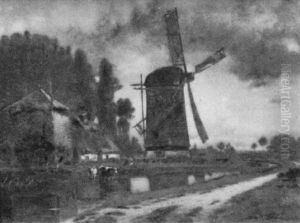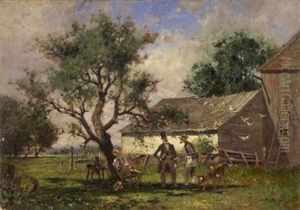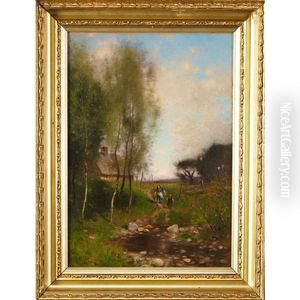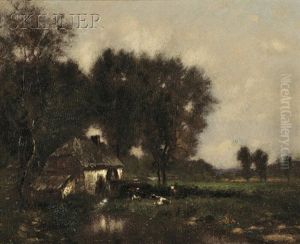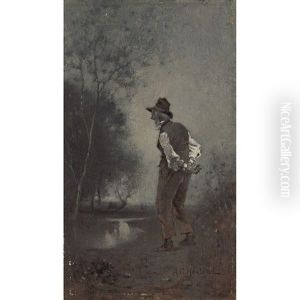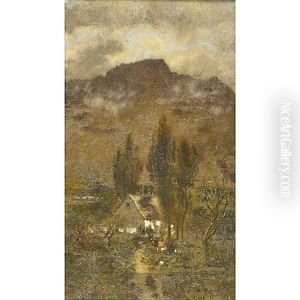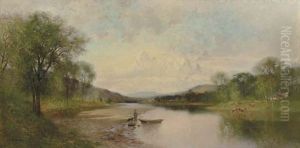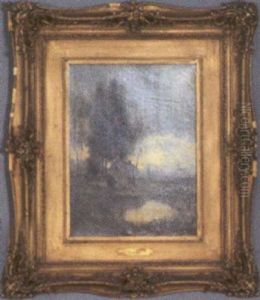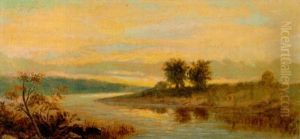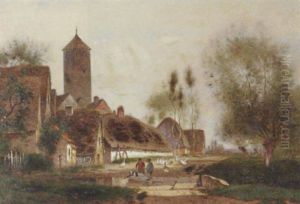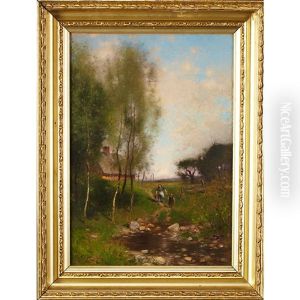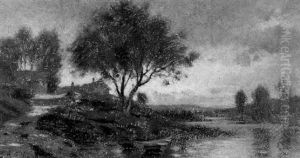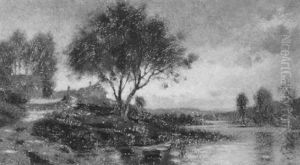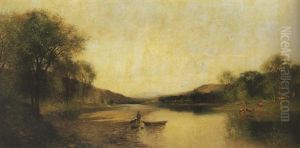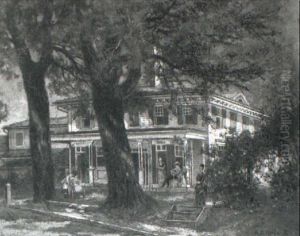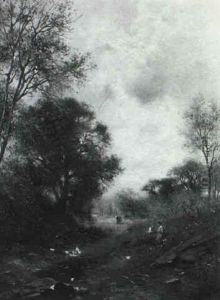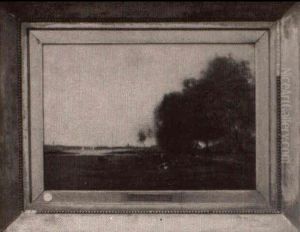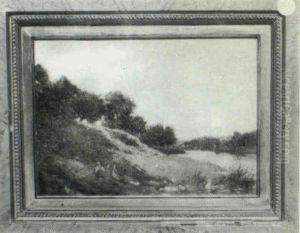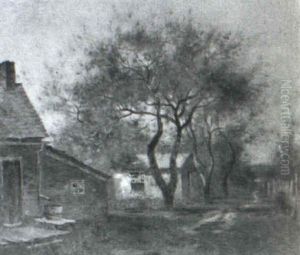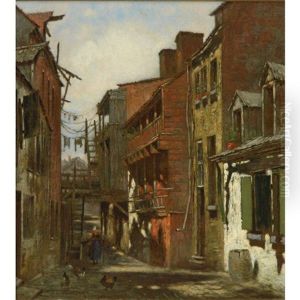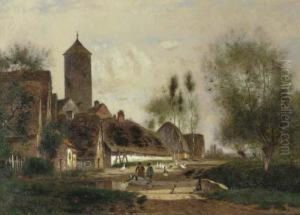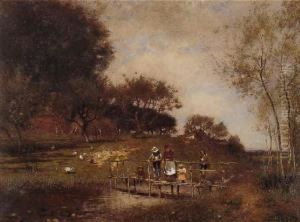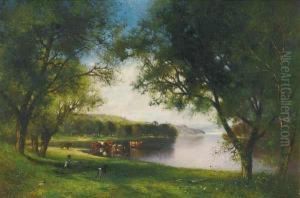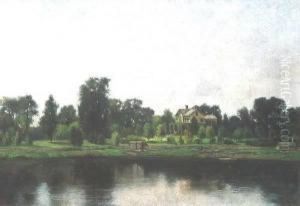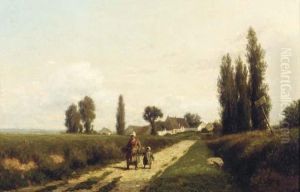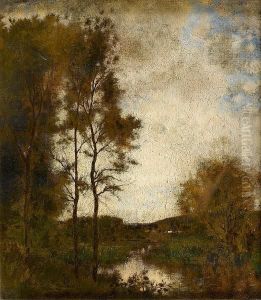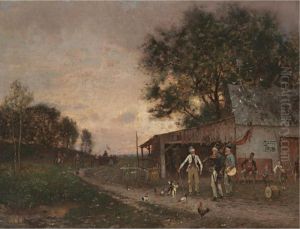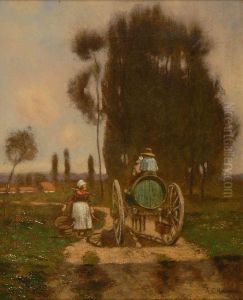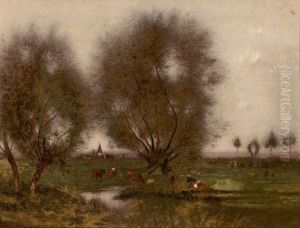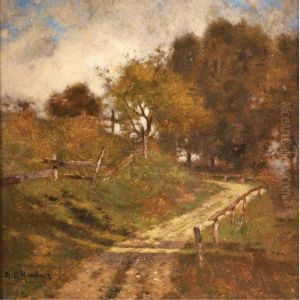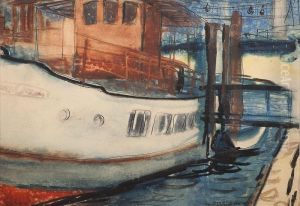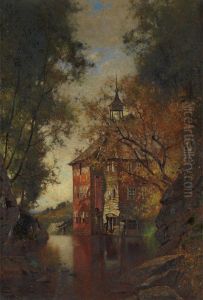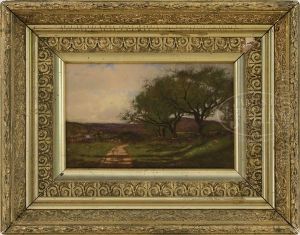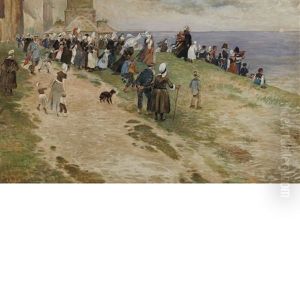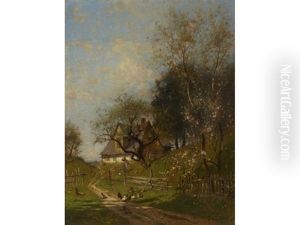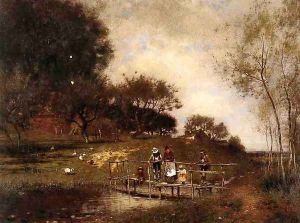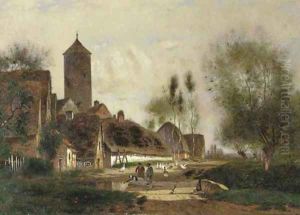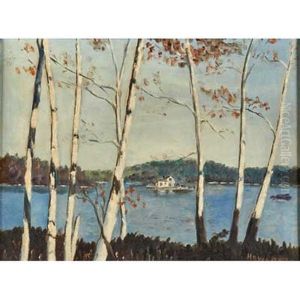Alfred Cornelius Howland Paintings
Alfred Cornelius Howland was an American painter, known for his rural landscapes and genre scenes. Born on February 12, 1838, in Walpole, New Hampshire, Howland embarked on his artistic journey at a relatively young age. His initial artistic training began in the United States, but he soon moved to Europe for more advanced study, reflecting the common practice among American artists of the time who sought to refine their skills and gain exposure to the rich artistic traditions of Europe.
In Europe, Howland studied in Paris under the tutelage of Émile Lambinet, a landscape painter who was known for his Barbizon school influences. This experience deeply impacted Howland's artistic development, instilling in him a love for naturalistic and atmospheric landscapes that would characterize much of his work throughout his career. He also spent time in Düsseldorf, a city famous for its art academy and a thriving community of artists. Howland's European period was not just a time of learning but also of professional growth, as he began exhibiting his works in prestigious venues.
Returning to the United States in the late 1860s, Howland settled in New York City, where he became an active member of the artistic community. He was associated with the National Academy of Design and participated in numerous exhibitions, including those at the Boston Art Club and the Pennsylvania Academy of the Fine Arts. His paintings during this period often depicted scenes from rural New England, capturing the tranquil beauty of the countryside with a keen eye for detail and a sensitive treatment of light.
Howland's style evolved over the years, showing influences from various artistic movements, including the Hudson River School and the Barbizon School. However, his work always maintained a distinctive quality, marked by a gentle realism and an affectionate portrayal of American rural life. He was particularly adept at capturing the changing seasons and the daily activities of country folk, themes that resonated with audiences of his time.
Despite achieving success and recognition in his lifetime, Alfred Cornelius Howland's name is not as widely remembered today as some of his contemporaries. Nonetheless, his contribution to American art, especially in terms of landscape and genre painting, remains significant. Howland passed away on March 11, 1909, leaving behind a body of work that continues to be appreciated by art historians and collectors for its serene beauty and historical value.
